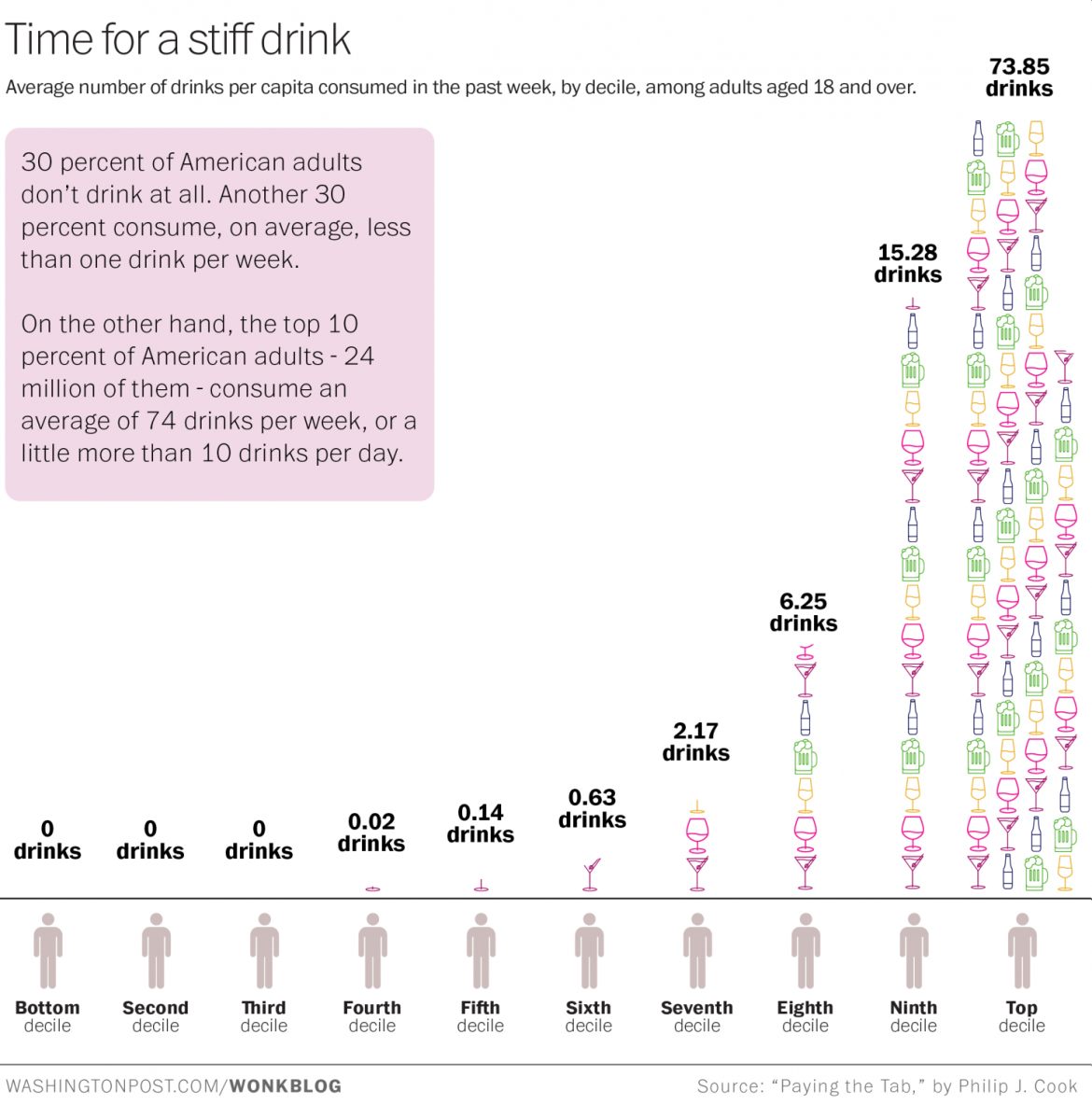Think You Drink A Lot? This Chart Will Tell You
The top 10% of drinkers consume an average of 74 drinks a week. The referenced NESARC study has shown that this group has been capable of cutting back or quitting in a one year follow up. Full Spectrum Recovery sees this happen on a regular basis through their DRINKCHOICE program. Think you drink a lot? This chart will tell you.
~ Len Van Nostrand, M.A., CCP
Do you drink a glass of wine with dinner every night? That puts you in the top 30 percent of American adults in terms of per-capita alcohol consumption. If you drink two glasses, that would put you in the top 20 percent.
But in order to break into the top 10 percent of American drinkers, you would need to drink more than two bottles of wine with every dinner. And you’d still be below-average among those top 10 percenters.
The top 10 percent of American drinkers – 24 million adults over age 18 – consume, on average, 74 alcoholic drinks per week. That works out to a little more than four-and-a-half 750 ml bottles of Jack Daniels, 18 bottles of wine, or three 24-can cases of beer. In one week.
Or, if you prefer, 10 drinks per day.
These figures come from Philip J. Cook’s “Paying the Tab,” an economically-minded examination of the costs and benefits of alcohol control in the U.S. Specifically, they’re calculations made using the National Epidemiologic Survey on Alcohol and Related Conditions (NESARC) data.
I double-checked these figures with Cook, just to make sure I wasn’t reading them wrong. “I agree that it’s hard to imagine consuming 10 drinks a day,” he told me. But, “there are a remarkable number of people who drink a couple of six packs a day, or a pint of whiskey.”
As Cook notes in his book, the top 10 percent of drinkers account for well over half of the alcohol consumed in any given year. On the other hand, people in the bottom three deciles don’t drink at all, and even the median consumption among those who do drink is just three beverages per week.
The shape of this usage curve isn’t exactly unique. The Pareto Law states that “the top 20 percent of buyers for most any consumer product account for fully 80 percent of sales,” according to Cook. The rule can be applied to everything from hair care products to X-Boxes.
But the consequences of the Pareto Law are different when it comes to industries like alcohol, tobacco, and now marijuana. If you consume 10+ drinks per day, for instance, you almost certainly have a drinking problem. But the beverage industry is heavily dependent on you for their profits.
“One consequence is that the heaviest drinkers are of greatly disproportionate importance to the sales and profitability of the alcoholic-beverage industry,” he writes writes. “If the top decile somehow could be induced to curb their consumption level to that of the next lower group (the ninth decile), then total ethanol sales would fall by 60 percent.”
This post was authored by Christopher Ingraham and originally appeared Sep 25, 2014 on The Washington Post website.
###
Len Van Nostrand, M.A., CCP
Certified Coach Practitioner
len@fullspectrumrecovery.com
805-886-1963
Posted in: Informative Articles
Leave a Comment (0) ↓
